|
1. Judson Church is Ringing in Harlem (Made-to-Measure) / Twenty Looks or Paris is Burning at the Judson Church (M2M), Trajal Harrell + Thibault Lac + Ondrej Vidlar (Festival TransAmériques) American choreographer Trajal Harrell’s work has always been impressive if only for its sheer ambition (his Twenty Looks series currently comprises half a dozen shows), but Judson Church is Ringing in Harlem (Made-to-Measure) is his masterpiece. In the most primal way, he proves that art isn’t a caprice but that it is a matter of survival. Harrell and dancers Thibault Lac and Ondrej Vidlar manifest this need by embodying it to the fullest. The most essential show of this or any other year. 2. ENTRE & La Loba (Danse-Cité) & INDEEP, Aurélie Pedron Locally, it was the year of Aurélie Pedron. She kept presenting her resolutely intimate solo ENTRE, a piece for one spectator at a time who – eyes covered – experiences the dance by touching the performer’s body. In the spring, she offered a quiet yet surprisingly moving 10-hour performance in which ten blindfolded youths who struggled with addiction evolved in a closed room. In the fall, she made us discover new spaces by taking over Montreal’s old institute for the deaf and mute, filling its now vacant rooms with a dozen installations that ingeniously blurred the line between performance and the visual arts. Pedron has undeniably found her voice and is on a hot streak. 3. Co.Venture, Brooklyn Touring Outfit (Wildside Festival) The most touching show I saw this year, a beautiful portrait of an intergenerational friendship and of the ways age restricts our movement and dance expands it. 4. Avant les gens mouraient (excerpt), Arthur Harel & (LA)HORDE (Marine Brutti, Jonathan Debrouwer, Céline Signoret) (Festival TransAmériques) wants&needs danse’s The Total Space Party allowed the students of L’École de danse contemporaine to revisit Avant les gens mouraient. It made me regret I hadn’t included it in my best of 2014 list, so I’m making up for it here. Maybe it gained in power by being performed in the middle of a crowd instead of on a stage. Either way, this exploration of Mainstream Hardcore remains the best theatrical transposition of a communal dance I’ve had the chance to see. 5. A Tribe Called Red @ Théâtre Corona (I Love Neon, evenko & Greenland Productions) I’ve been conscious of the genocide inflicted upon the First Nations for some time, but it hit me like never before at A Tribe Called Red’s show. I realized that, as a 35 year-old Canadian, it was the first time I witnessed First Nations’ (not so) traditional dances live. This makes A Tribe Called Red’s shows all the more important. 6. Naked Ladies, Thea Fitz-James (Festival St-Ambroise Fringe) Fitz-James gave an introductory lecture on naked ladies in art history while in the nude herself. Before doing so, she took the time to look each audience member in the eye. What followed was a clever, humorous, and touching interweaving of personal and art histories that exposed how nudity is used to conceal just as much as to reveal. 7. Max-Otto Fauteux’s scenography for La très excellente et lamentable tragédie de Roméo et Juliette (Usine C)
Choreographer Catherine Gaudet and director Jérémie Niel stretched the short duo they had created for a hotel room in La 2e Porte à Gauche’s 2050 Mansfield – Rendez-vous à l’hôtel into a full-length show. What was most impressive was scenographer Max-Otto Fauteux going above and beyond by recreating the hotel room in which the piece originally took place, right down to the functioning shower. The surreal experience of sitting within these four hyper-realistic walls made the performance itself barely matter.
1 Comment
1. Tragédie, Olivier Dubois (Danse Danse)
Avec son opus pour dix-huit danseurs nus, Dubois a abordé les grands thèmes (le passage du temps, la mortalité, la petitesse de la vie humaine, le rôle de l’art, l’humanité) en prenant son temps, en n’empruntant aucun raccourci facile, en laissant le sens émerger de lui-même. 2. Uncanny Valley Stuff, Dana Michel (Usine C) Avec Uncanny Valley Stuff, Michel a continué sa recherche entamée avec Yellow Towel, spectacle qui figure dans le top dix du magazine new-yorkais Time Out et pour lequel le prestigieux festival ImPulsTanz a créé un prix spécialement pour elle. Sa nouvelle courte pièce est toute aussi incisive mais encore plus drôle. En empilant les clichés sur les Noirs jusqu’à ce qu’ils s’entremêlent et se contredisent, Michel démontre l’absurdité de ces stéréotypes qui nous présentent une vision déformée du monde. 3. Antigone Sr.: Twenty Looks or Paris Is Burning at the Judson Church (L), Trajal Harrell (Festival TransAmériques) Antigone Sr. a probablement été le spectacle de danse qui a créé le plus de divisions cette année. On pourrait diviser le public en trois : ceux qui ont quitté la salle, ceux qui sont restés assis les bras croisés, et ceux qui se sont levés pour danser. Il n’est donc pas surprenant que le spectacle se retrouve dans mon palmarès. Il faut dire que je suis queer et que j’ai une affinité pour la danse post-moderne, ce qui me donne une double porte d’entrée sur le sujet. Pour ceux qui n’ont pas eu l’endurance nécessaire pour passer à travers ce défilé de mode DIY de deux heures, il serait bon de noter que les plus grands bals qui ont inspiré la pièce pouvaient durer jusqu’à dix heures de temps; comptez-vous chanceux! Peut-être comprenez-vous maintenant un peu mieux ce que c’est que de se sentir aliéné par la culture dominante. 4. Monsters, Angels and Aliens Are Not a Substitute for Spirituality…, Andrew Tay (OFFTA) Pour être honnête, lorsque j’ai vu la nouvelle pièce de Tay, qui vire de plus en plus dans le performance art, je me suis demandé si j’étais en train de regarder un artiste perdre la tête sur scène ou si Tay était en contrôle de son art. J’étais évidemment assez intrigué pour découvrir la réponse avec Summoning Aesthetics qu’il a ensuite présenté avec François Lalumière au Festival Phénomena. Conclusion : Tay continue dans la même veine ritualiste, sachant clairement dans quelle direction il va même s’il ne connaît pas nécessairement sa destination. J’ai admiré qu’il ait pris la décision de terminer Monsters sur une note différente de ce qu’il avait prévu pendant la représentation même. La misogynie latente qui avait l’habitude d’hanter ses pièces est disparue. Ce qui demeure est son ludisme, son humour et son ouverture aux expériences, peu importe ce qu’elles s’avèrent être. Si je me souviens bien, un spectateur avait qualifié Summoning Aesthetics « d’honnêteté perverse. » Cela me semble aussi approprié. 5. Built to Last, Meg Stuart (Festival TransAmériques) Avec Built to Last, Stuart (qui a reçu le Grand Prix de la Danse de Montréal) a abordé des thèmes similaires à ceux de Tragédie d’Olivier Dubois, mais de façon beaucoup plus théâtrale. En juxtaposant un immense mobile de notre système solaire avec une maquette d’un tyrannosaure et la danse contemporaine avec la musique classique, Stuart a démontré l’insignifiance des actions humaines et que notre seule rédemption possible se trouve dans l’art. 6. Florilège, Margie Gillis (Agora de la danse) Pour célébrer ses quarante ans de carrière, Gillis nous a offert cinq pièces de son répertoire revisitant les années 1978 à 1997. Par le fait même, elle nous a rappelé pourquoi elle est devenue une danseuse de telle renommée. L’intangible se manifeste à travers son corps, soulignant la fragilité de l’humain dans un univers chaotique. 7. Mange-moi, Andréane Leclerc (Tangente) Leclerc a utilisé la contorsion et la nudité pour aborder les relations de pouvoir entre les individus lorsque notre survie dépend des autres. Qu’elle puisse s’attaquer à de telles questions tout en offrant une des pièces les plus sensorielles de l’année démontre l’intelligence de son travail. 8. Tête-à-Tête, Stéphane Gladyszewski (Agora de la danse) Ma réaction à ma sortie de cette pièce de quinze minutes pour un seul spectateur à la fois : on doit donner à Gladyszewski tout l’argent dont il a besoin pour réaliser ses projets. Aucun autre chorégraphe n’arrive à intégrer la technologie avec autant d’adresse. Tête-à-Tête était à la fois intime, inquiétant et magique. 9. The Nutcracker, Maria Kefirova (Tangente) L’excentrique Kefirova a troqué l’écran vidéo pour des haut-parleurs et a démontré qu’elle maîtrise le son avec autant de flair que l’image. « Elle n’utilise pas le son pour meubler le silence comme le fond maints spectacles, mais pour matérialiser l’invisible, » disais-je. Difficile d’oublier la satisfaction ressentie lors de l’exutoire du tableau final, où Kefirova s’acharne à faire éclater des noix de Grenoble en morceaux en se servant de ses chaussures à talons hauts comme casse-noisette. 10. Junkyard/Paradis remix, Catherine Vidal (Usine C) J’espère avoir assez établi le fait que je suis un fan fini de Mélanie Demers pour pouvoir dire ceci (qui, je crois, n’est pas l’opinion populaire) : Junkyard/Paradis est probablement sa pièce que j’aime le moins. Lors de l’événement MAYDAY remix, où la chorégraphe a laissé des artistes remixer son travail, la metteure en scène Catherine Vidal a donné au spectacle la structure dramatique qu’il méritait avec une fin des plus jubilatoires. 11. loveloss, Michael Trent (Agora de la danse) Extrait de ma critique : « Trent n’a toujours pas peur de prendre le temps qu’il faut. De plus, il évite ici l’humour, le théâtral et le mouvement séducteur (athlétique, rapide, synchronisé), toutes ces astuces que des chorégraphes moins confiants utilisent pour que leur dance soit plus accessible. L’interprétation est sentie sans être affectée. loveloss est une œuvre touchante … » 12. Milieu de nulle part, Jean-Sébastien Lourdais (Agora de la danse) Pour la performance de l’année, celle de Sophie Corriveau, qui s’est méritée la toute première résidence de création pour interprètes offerte par l’Agora de la danse. Notons que le diffuseur s’est démarqué avec une programmation solide pour une deuxième année consécutive. 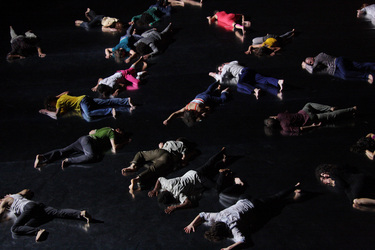 Levée des conflits, photo by Caroline Ablain Levée des conflits, photo by Caroline Ablain As my years as a dance critic pile on, it’s probably to be expected that I see more and more works I’ve already seen. This year, I can think of at least five off the top of my head. The one that most stood up to a repeat viewing was Matija Ferlin and Ame Henderson’s The Most Together We’ve Ever Been. I took the bus to Ottawa to see it just as a snowstorm was hitting the city. The ride ended up taking four hours. I barely had enough time to shove some of the worst food I’ve ever had in my mouth before running over to Arts Court, an old courthouse that has been turned into a beautiful art space. And, as soon as the show started, I knew it was all worth it. Back in Montreal, Israeli choreographer Sharon Eyal made a much-anticipated return after six years with Corps de Walk, a show she created with her partner Gai Behar. The uniformity she imposed on the twelve dancers of Norway’s Carte Blanche was oppressive and disturbing. It was its own indictment of homogeneity. At the Biennale de gigue contemporaine, the always reliable Nancy Gloutnez stood out yet again. With Les Mioles, she borrowed from classical music and became a conductor, turned her dancers’ feet into instruments, and composed a score reminiscent of Steve Reich in its obsessive build-up. After years of being one of the most rigorous emerging choreographers in Montreal, Sasha Kleinplatz has now fully emerged with Chorus II. The audience stood above six male dancers who swayed between demonstrations of physical strength and chill-inducing vulnerability. It is now up to venue artistic directors everywhere to shine on Kleinplatz the spotlight she so clearly deserves. Speaking of which, 2013 was the year of Agora de la danse. They probably had their best programming since I started following dance. It all began with Karine Denault’s Pleasure Dome, in which musicians and dancers explored pleasure without ever lazily resorting to shortcuts. Rather, she allowed the meaning of the work to emerge on its own and for Pleasure Dome to impose itself by the same token. It was followed by When We Were Old, a duo by Québec’s Emmanuel Jouthe and Italy’s Chiara Frigo (presented in collaboration with Tangente). The choreographer-dancers managed to bypass every single contemporary dance cliché that usually occurs as soon as a man and woman are onstage. In each and every moment, their encounter felt fresh and sincere. Agora ended the year with Prismes by Benoît Lachambre, who a month later would win the Montreal Dance Prize. Created for Montréal Danse, Prismes explored the effect of light on perception in a chromatic environment, as well as the fluidity of gender. Lighting designer Lucie Bazzo outdid herself for this highly experiential work. At the Festival TransAmériques, it was French choreographer Boris Charmatz who stood out with Levée des conflits, an opus of twenty-five movements repeated as a canon by twenty-four dancers. From the simplicity of the choreography to the high number of performers, Levée des conflits impressively hovered between minimalism and excess. I spent the summer in Iceland, where my trip ended with the Reykjavík Dance Festival. There, Norway’s Sissel M Bjørkli presented one of the most singular shows I’ve ever seen with Codename: Sailor V. It took place in a tiny space, barely big enough to seat fifteen. The smoke that filled the room along with Elisabeth Kjeldahl Nilsson and Evelina Dembacke’s intensely saturated coloured lighting blurred the edges of everything. Inspired by anime, Bjørkli created an alter ego for herself and through imaginative play managed to turn an office chair into a spaceship. That shit was magical. So was Nothing’s for Something by Belgium’s Heine Avdal and Yukiko Shinozaki, which opened with a ballet for six curtains, each suspended by six huge helium-filled balloons. Set to classical music, it was reminiscent of Disney’s Fantasia. For its finale, eight such balloons were left to float around the room while emitting breathing sounds, appearing like disembodied alien visitors. Soon after my return to Montreal, Marie Chouinard presented Henri Michaux : Mouvements. The genesis of this work, when Carol Prieur first incarnated the drawings of Henri Michaux back in 2005, is the reason why I’m a dance critic today. Seeing the twelve dancers of Chouinard’s company lend themselves to the exercise was just as riveting eight years later. By translating drawings into movement, Chouinard demonstrated the power of dance to think the body creatively. Usine C ended the year on a high note with their program from the Netherlands, most especially Ann Van den Broek’s feminist work for three female dancers, Co(te)lette. The show was powerful in its exposition of women’s bodies as a site of tension, torn between being objects of desire and embodied subjects. We can only hope that there will be more works like it in 2014. My wish for the Montreal dance scene in 2013 is for Marie-Hélène Falcon to quit her job as artistic director of the Festival TransAmériques. I’m hoping she’ll become the director of a theatre so that the most memorable shows will be spread more evenly throughout the year instead of being all bunched up together in a few weeks at the end of spring. With that being said, here are the ten works that still resonated with me as 2012 came to an end. 1. Cesena, Anne Teresa De Keersmaeker + Björn Schmelzer (Festival TransAmériques)
I’ve been thinking about utopias a lot this year. I’ve come to the conclusion that – since one man’s utopia is another’s dystopia – they can only be small in nature: one person or, if one is lucky, maybe two. With Cesena, Belgian choreographer Anne Teresa De Keersmaeker showed me that it could be done with as many as nineteen people, if only for two hours, if only in a space as big as a stage. Dancers and singers all danced and sang, independently of their presupposed roles, and sacrificed the ego’s strive for perfection for something better: the beauty of being in all its humanly imperfect manifestations. They supported each other (even more spiritually than physically) when they needed to and allowed each other the space to be individuals when a soul needed to speak itself. 2. Sideways Rain, Guilherme Botelho (Festival TransAmériques) I often speak of full commitment to one’s artistic ambitions as extrapolated from a clear and precise concept carried out to its own end. Nowhere was this more visible this year than in Botelho’s Sideways Rain, a show for which fourteen dancers (most) always moved from stage left to stage right in a never-ending loop of forward motion. More than a mere exercise, the choreography veered into the metaphorical, highlighting both the perpetual motion and ephemeral nature of human life, without forgetting the trace it inevitably leaves behind, even in that which is most inanimate. More importantly, it left an unusual trace in the body of the audience too, making it hard to even walk after the show. 3. (M)IMOSA: Twenty Looks or Paris Is Burning at the Judson Church (M), Cecilia Bengolea + François Chaignaud + Trajal Harrell + Marlene Monteiro Freitas (Festival TransAmériques) By mixing post-modern dance with queer performance, the four choreographer-dancers of (M)IMOSA offered a show that refreshingly flipped the bird to the usual conventions of the theatre. Instead of demanding silence and attention, they left all the house lights on and would even walk in the aisles during the show, looking for their accessories between or underneath audience members. Swaying between all-eyes-on-me performance and dancing without even really trying, as if they were alone in their bedroom, they showed that sometimes the best way to dramatize the space is by rejecting the sanctity of theatre altogether. 4. Goodbye, Mélanie Demers (Festival TransAmériques) Every time I think about Demers’s Goodbye (and it’s quite often), it’s always in conjunction with David Lynch’s Inland Empire. The two have a different feel, for sure, but they also do something quite similar. In Inland Empire, at times, an actor will perform an emotional scene, and Lynch will then reveal a camera filming them, as if to say, “It’s just a movie.” Similarly, in Goodbye, dancer Jacques Poulin-Denis can very well say, “This is not the show,” it still doesn’t prevent the audience from experiencing affect. Both works show the triviality of the concept of suspension of disbelief, that art does not affect us in spite of its artificiality, but because of it. 5. The Parcel Project, Jody Hegel + Jana Jevtovic (Usine C) One of the most satisfying days of dance I’ve had all year came as a bit of a surprise. Five young choreographers presented the result of their work after but a few weeks of residencies at Usine C. I caught three of the four works, all more invigorating than some of the excessively polished shows that some choreographers spend years on. It showed how much Montreal needs a venue for choreographers to experiment rather than just offer them a window once their work has been anesthetically packaged. The most memorable for me remains Hegel & Jevtovic’s The Parcel Project, which began with a surprisingly dynamic and humorous 20-minute lecture. The second half was an improvised dance performance, set to an arbitrarily selected pop record, which ended when the album was over, 34 minutes later. It was as if John Cage had decided to do dance instead of music. Despite its explanatory opening lecture, The Parcel Project was as hermetic as it was fascinating. 6. Spin, Rebecca Halls (Tangente) Halls took her hoop dancing to such a degree that she exceeded the obsession of the whirling dervish that was included in the same program as her, and carried it out to its inevitable end: exhaustion. 7. Untitled Conscious Project, Andrew Tay (Usine C) Also part of the residencies at Usine C, Tay produced some of his most mature work to date, without ever sacrificing his playfulness. 8. 1001/train/flower/night, Sarah Chase (Agora de la danse) Always, forever, Sarah Chase, the most charming choreographer in Canada, finding the most unlikely links between performers. She manages to make her “I have to take three boats to get to the island where I live in BC” and her “my dance studio is the beach in front of my house” spirit emerge even in the middle of the city. 9. Dark Sea, Dorian Nuskind-Oder + Simon Grenier-Poirier (Wants & Needs Danse/Studio 303) Choreographer Nuskind-Oder and her partner-in-crime Grenier-Poirier always manage to create everyday magic with simple means, orchestrating works that are as lovely as they are visually arresting. 10. Hora, Ohad Naharin (Danse Danse) A modern décor. The legs of classical ballet and the upper body of post-modern dance, synthesized by the athletic bodies of the performers of Batsheva. These clear constraints were able to give a coherent shape to Hora, one of Naharin’s most abstract works to date. Scrooge Moment of the Year Kiss & Cry, Michèle Anne De Mey + Jaco Van Dormael (Usine C) Speaking of excessively polished shows… La Presse, CIBL, Nightlife, Le Devoir, and everyone else seemingly loved Kiss & Cry. Everyone except me. To me, it felt like a block of butter dipped in sugar, deep fried, and served with an excessive dose of table syrup; not so much sweet as nauseating. It proved that there’s no point in having great means if you have nothing great to say. Cinema quickly ruined itself as an art form; now it apparently set out to ruin dance too. And I’m telling you this so that, if Kiss & Cry left you feeling dead on the inside, you’ll know you’re not alone. 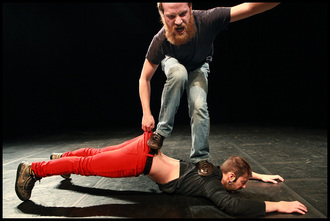 Still Standing You, photo de Phile Deprez Still Standing You, photo de Phile Deprez 2011 tire à sa fin. Heure des bilans. Retour sur les œuvres et artistes qui ont marqué le paysage de la danse à Montréal. Encore une fois cette année, le Festival TransAmériques s’est démarqué grâce à la programmation audacieuse de Marie-Hélène Falcon. C’est ici qu’on aura trouvé le show de l’année, Still Standing You de Pieter Ampe et Guilherme Garrido, une pièce sans musique, sans éclairage théâtral, et éventuellement sans costume, où on ne peut que créditer la performance des deux chorégraphes-interprètes pour avoir créer un show des plus prenants. Derrière une grosse couche trash à la Jackass, ils ont composé le spectacle le plus dense de l’année. De son côté, la chorégraphe Cindy Van Acker a présenté non pas une, deux, ou trois pièces, mais bien quatre qui démontraient toutes un engagement total dans la poursuite d’idées chorégraphiques claires et simples, mais riches : Lanx, Obvie, Nixe, et Obtus. À partir de séquences de mouvements souvent élémentaires, elle composait une danse si pure qu’elle en devenait graphisme et parfois même voyage initiatique parmi un éclairage sculptural de néons. Du côté du Québec, la chorégraphe Chanti Wadge a quant à elle créer un univers magique aux côtés du magnifique danseur David Rancourt avec o deer! Inspirée par les rituels autochtones et le règne animal, elle a réussi à invoquer les esprits ancestraux et transformer les corps, occasionnant l’émergence de la nature en plein milieu de la ville. Aussi digne d’être mentionné : Bodies in Urban Spaces de Willi Dorner, pour laquelle une douzaine de jeunes danseurs se sont adonnés à un mélange de parkour et de planking pour s’insinuer dans des racoins du centre-ville qui auraient autrement paru hors de notre portée. La masse spectatrice déambulatoire devenait elle-même un objet de spectacle pour les passants qui n’avaient aucune idée de ce qui se passait. On avait le sourire collé au visage et on regarde encore la ville d’un autre œil. Pour clore cette longue parenthèse FTA, finissons avec la chorégraphe Lia Rodrigues qui a trouvé son inspiration dans le chaos pour Pororoca. De la parade initiale des multiples interprètes qui fait du plancher un dégât jusqu’à leur installation en une ligne verticale en milieu de scène où ils exécuteront la majorité de leur danse dans cette formation hors du commun, le désordre permet aux danseurs de repenser le mouvement et de se rencontrer dans un corps-à-corps qui peut être autant empreint de violence que d’amour. Côté diffuseur, c’est toujours Tangente qui mène la danse contemporaine de l’avant avec une programmation éclectique et ouverte à l’innovation. On retient surtout deux pièces. La première : Costing not less than everything de Susanna Hood. Dans ce solo interprété de façon magistrale par Holly Bright, la lumière qui frappe le corps vulnérable de la danseuse est celle qui illumine aussi son chemin, au bout duquel elle dira oui à tout ce qui s’offre à elle, puisque tout passe par la vie. Profondément touchant. Deuxième coup de cœur chez Tangente : Tokyo Loft (Koshitsu) de Maki Morishita. Pour cette pièce, la chorégraphe-interprète a limité sa danse à un carré grand comme un ascenseur pour aborder de façon ludique la place réservée à l’art dans nos vies occupées et la nécessité de l’imagination pour surmonter une certaine passivité intellectuelle et physique moderne. C’était aussi drôle qu’inquiétant. À l’Agora de la danse, c’est Ame Henderson qui a une fois de plus fasciné avec sa pièce de groupe relay. La chorégraphe a équipé ses interprètes d’une structure précise qui leur permettait de danser en synchro n’importe quelles séries de mouvements qu’ils avaient apprises au cours de leurs carrières de danseurs; donc chaque représentation était complètement différente. Quand on pense que l’an dernier c’était Michael Trent qui nous avait surpris avec It’s about time, c’est à se demander si c’est maintenant à Toronto que la danse conceptuelle se fait. À Montréal, Sarah Dell’Ava est à peu près la seule à porter ce flambeau. Avec Esquisse 3 : Dans les plis, elle a une fois de plus prouvé qu’elle demeure la chorégraphe émergente à surveiller. Elle démontre l’intérêt qu’il y a à danser avec sa tête et non pas juste avec son corps. Elle remontera Dans les plis pour Tangente au Monument-National du 9 au 12 février. C’est évidemment à ne pas manquer. Un autre chorégraphe émergent qui mérite qu’on parle de lui : Patrick Lloyd Brennan, qui n’a pas attendu après les diffuseurs pour montrer son travail; il a présenté sa nouvelle création dans son propre loft. The New Bourjoiesie était un portrait satirique décapant d’une génération éduquée, nourrie de références culturelles, mais autrement incapable d’accomplir quoi que ce soit. L’art comme miroir déstabilisant. 2011, c’était aussi évidemment l’année de Marie Chouinard, qui fêtait les vingt ans de sa compagnie avec une longue série de spectacles. On se remémore Étude No 1, solo reposant presque entièrement sur les… pieds de Lucie Mongrain, qui dansait la claquette sur un plancher bourré de micros. Chouinard a un don pour la dramatisation de l’espace et c’était ici à son apogée. Avec son nouveau spectacle, LE NOMBRE D’OR (LIVE), elle a créé un monde étrange peuplé de créatures qui (du moins au début) ne semblaient rien avoir en commun avec nous. Une réflexion originale sur l’altérité de l’humain. Il faudrait aussi noter que plus de la moitié des pièces mentionnées ici (celles de Cindy Van Acker, Susanna Hood, Maki Morishita, Sarah Dell’Ava, et une de Marie Chouinard) sont des soli. Je ne suis pas sûr quelle conclusion en tirer… Peut-être qu’à défaut de quantité elles osent nous offrir la qualité? Habituellement, je ne mentionne pas de mauvais coups parce qu’on s’entend que, contrairement au cinéma ou à la musique, il est difficile d’argumenter que les artisans de la danse essaient de nous faire avaler de la merde pour faire des profits. Toutefois, cette année, je dois avouer être d’accord avec Fabienne Cabado du Voir et Aline Apostolska et Stéphanie Brody de La Presse; je commence moi aussi à être un peu tanné de la programmation du Théâtre La Chapelle, qui semble de plus en plus déterminée par leur marketing. Ils capitalisent un peu trop sur l’excitation des organes génitaux et pas assez sur celle de l’esprit. En espérant que ça change en 2012… Sur ce, Bonne et heureuse année! |
Sylvain Verstricht
has an MA in Film Studies and works in contemporary dance. His fiction has appeared in Headlight Anthology, Cactus Heart, and Birkensnake. s.verstricht [at] gmail [dot] com Categories
All
|



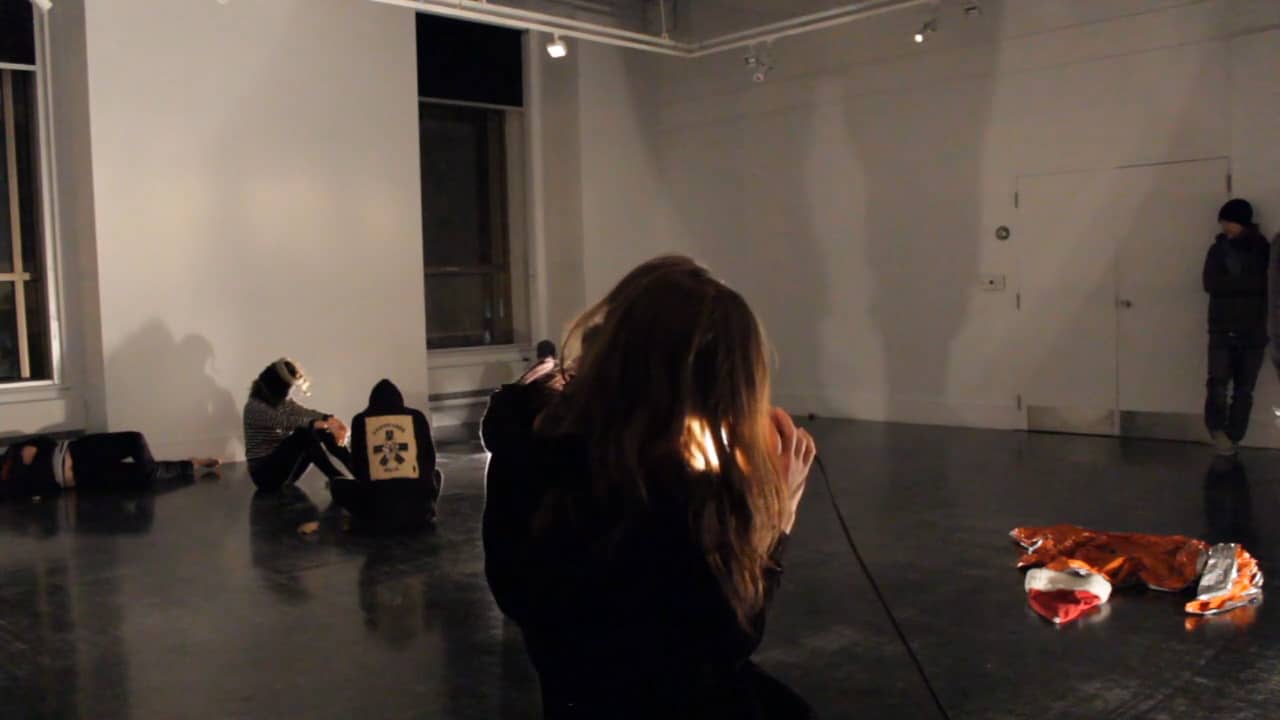
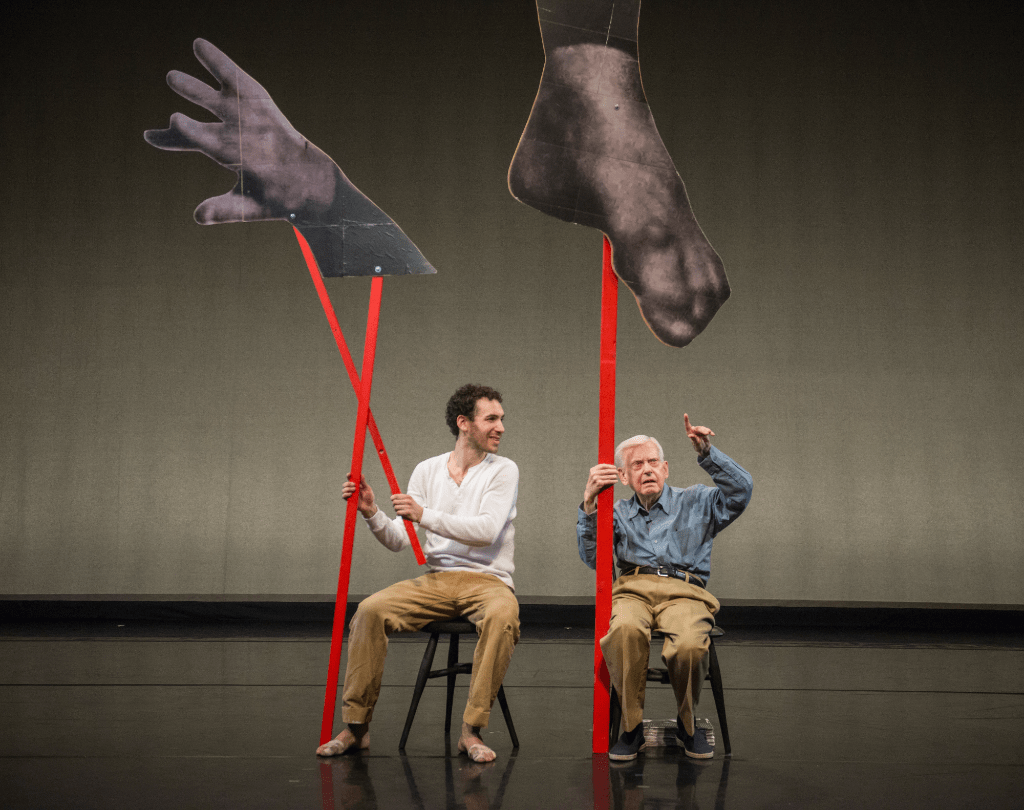
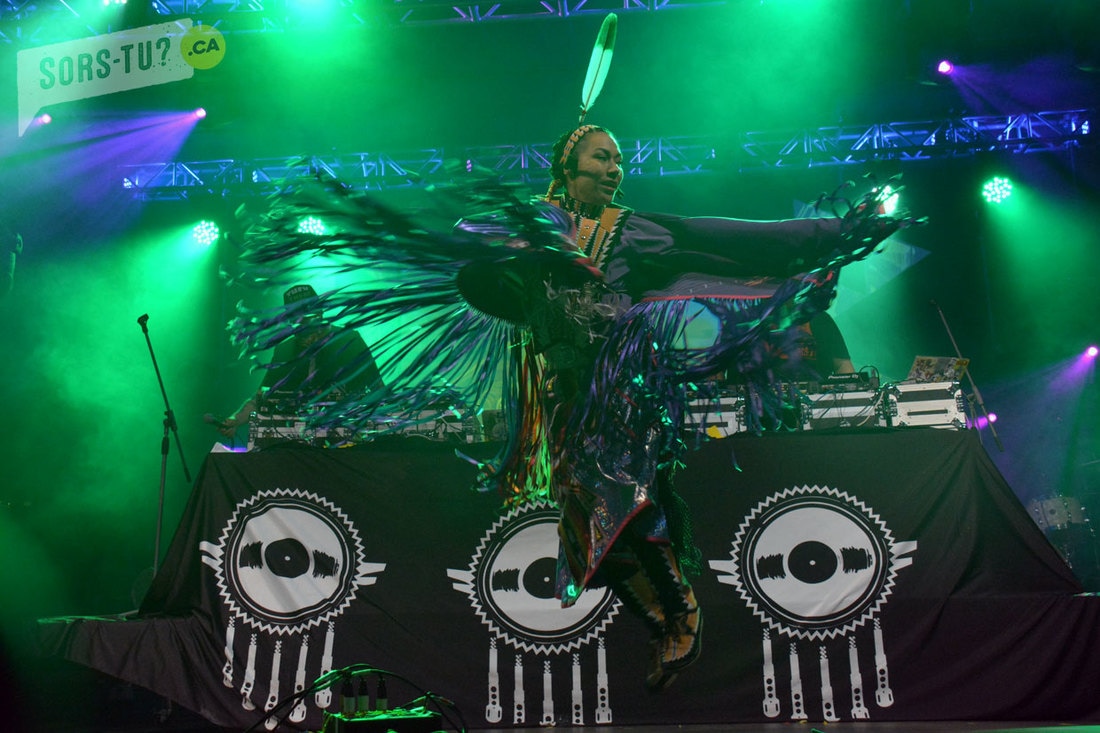
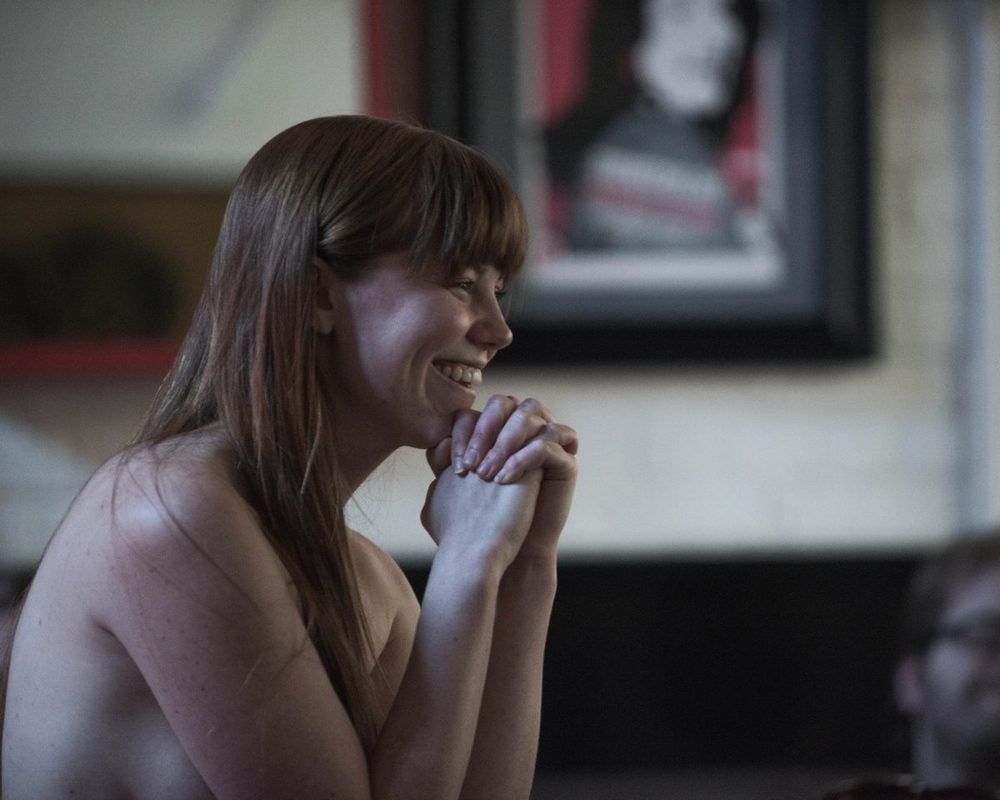
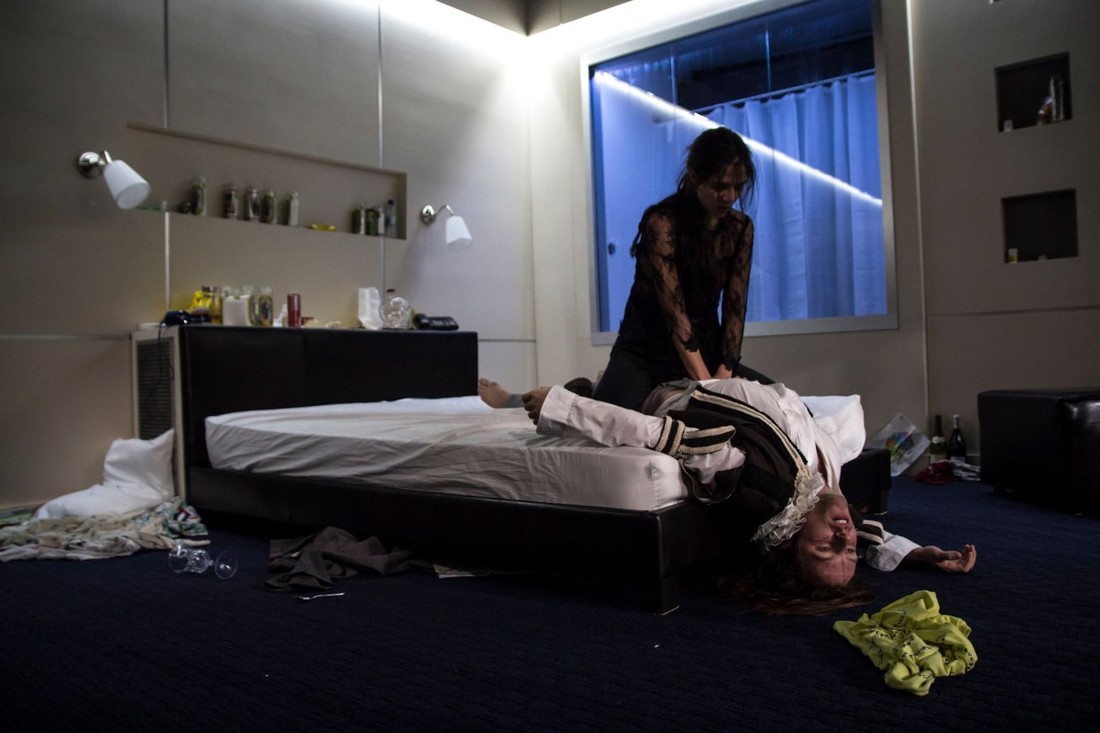
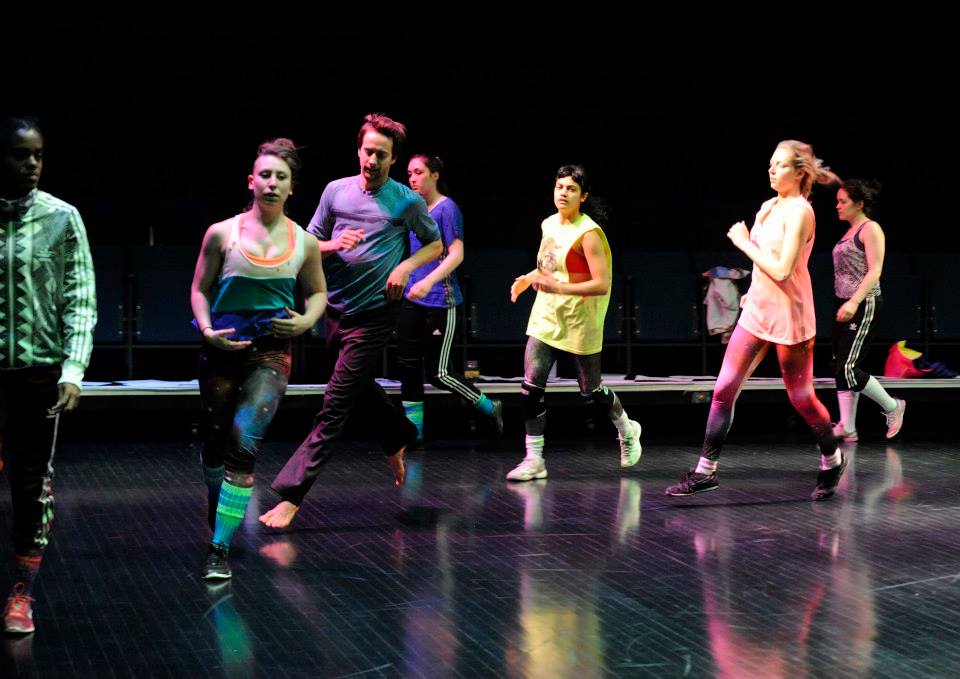
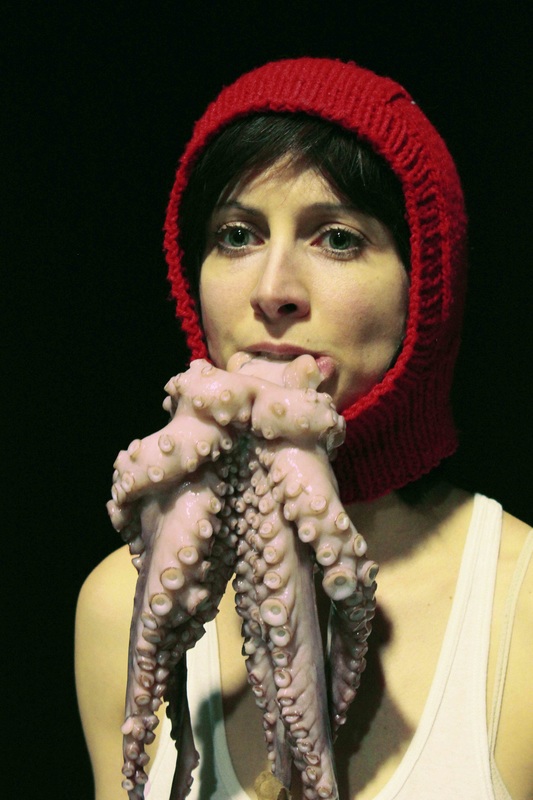
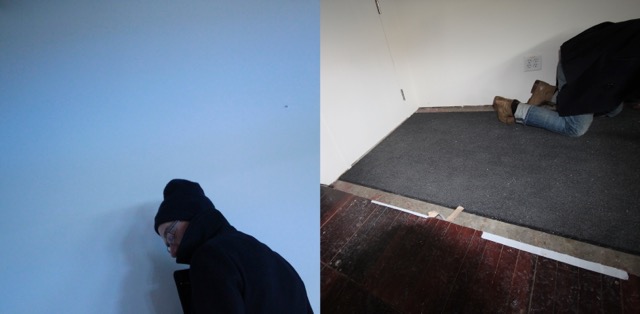
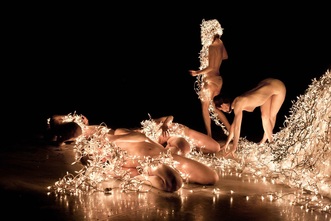
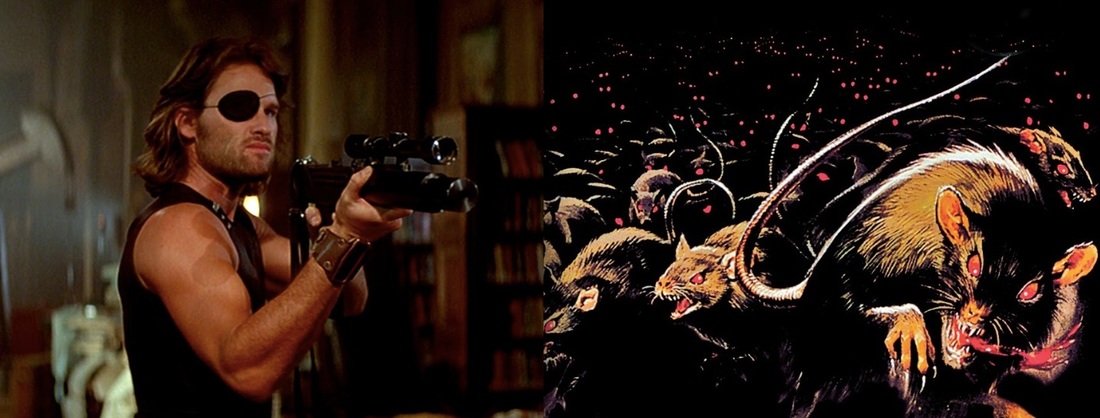
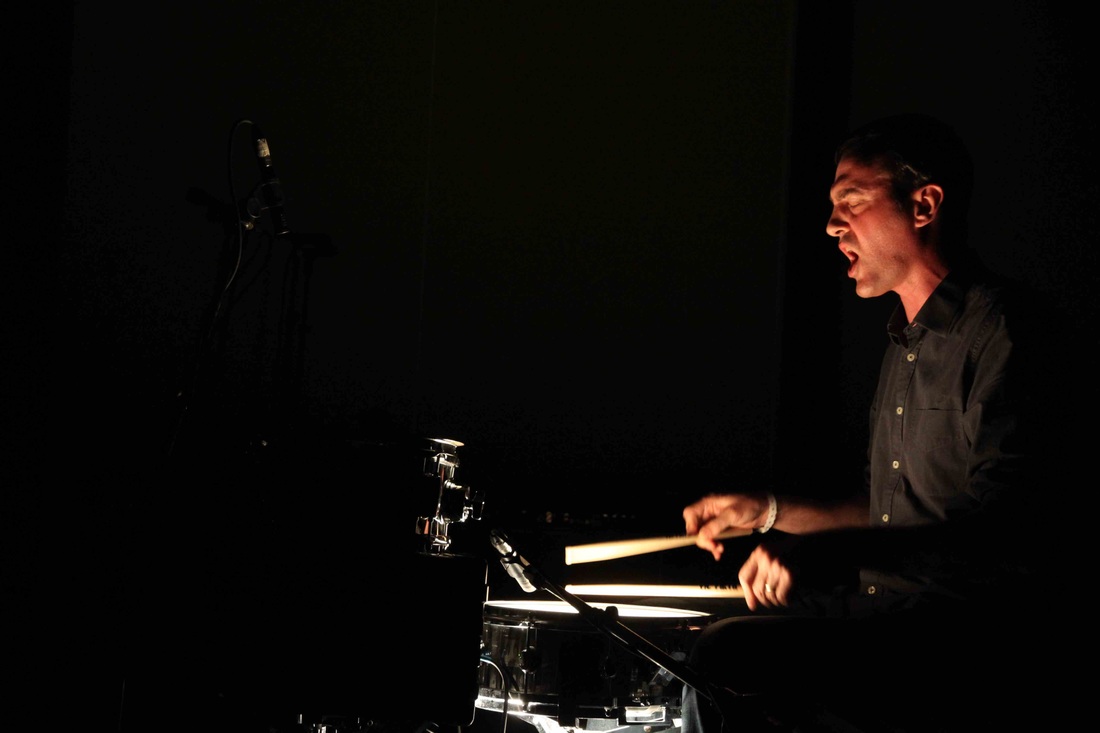

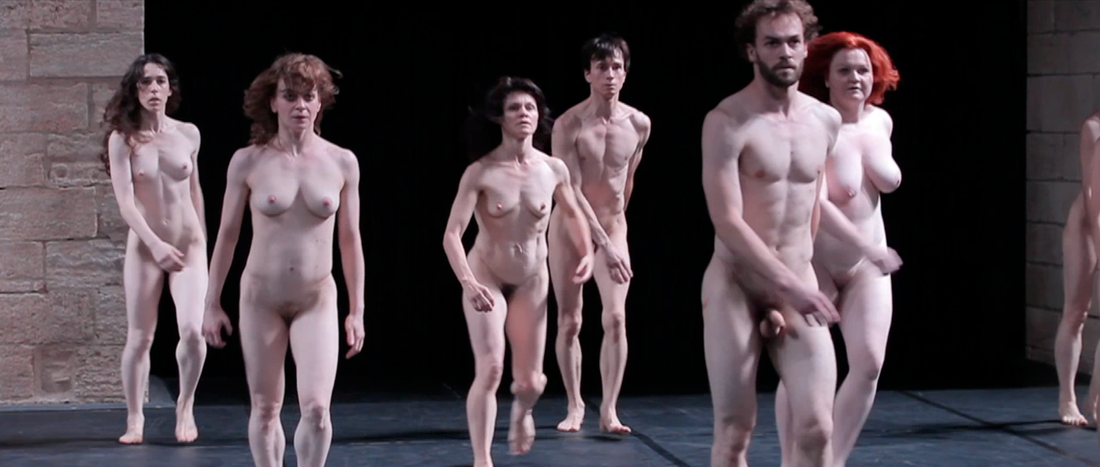
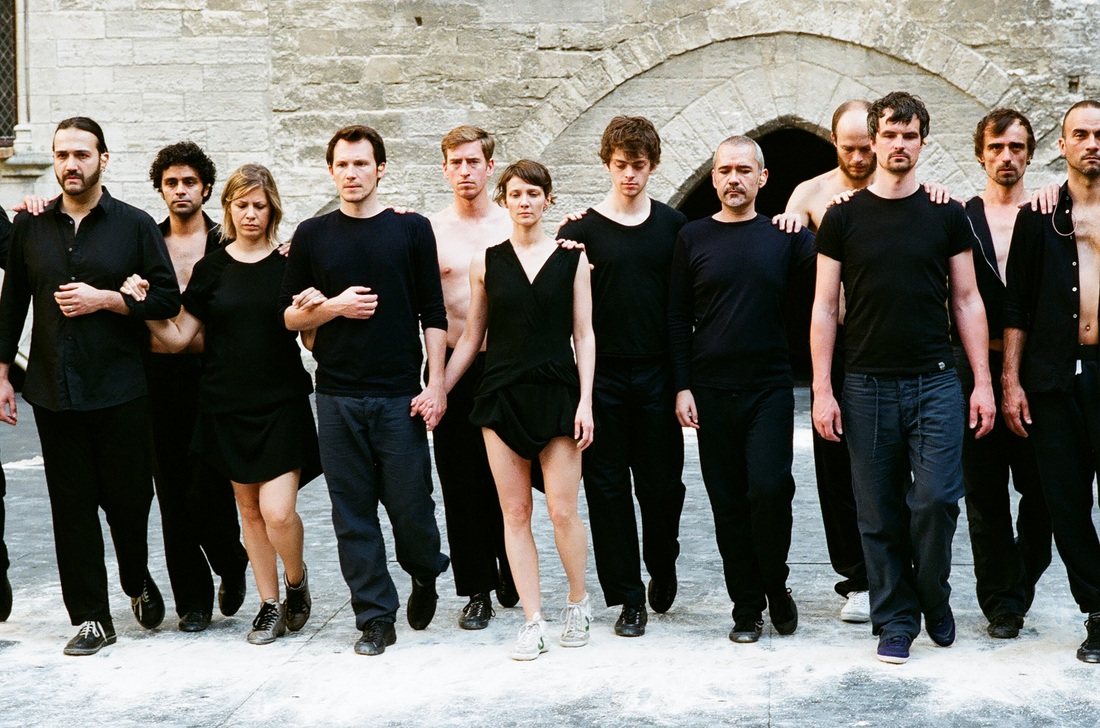
 RSS Feed
RSS Feed